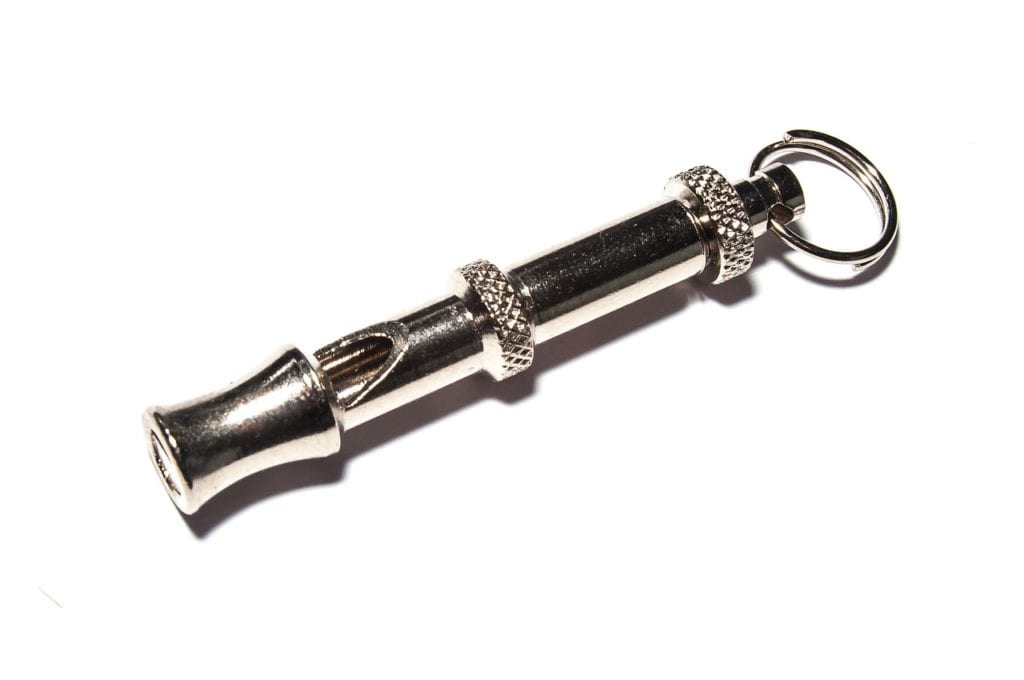Pros and Cons of Using Dog Whistles for Training

These days, the idea of an irritant – or in this case, properly termed as aversive –for training dogs is seen in a harsh light. However, what is important is that we should know if they actually work, and if they do, what damage they do to the dog’s psyche (if any).
Dog whistles have been a traditional communication system for dog owners, going back to shepherding and the early agricultural times. In fact, some rural areas in Europe still have people who practice a complex whistling command language to get their dogs to do complicated herding maneuvers.
However, in this case, we’re looking at the use of a modern-day whistle, or in some cases a dog whistle, which is a whistle whose pitch is too high for humans to hear, but can be heard by dogs just fine.
Pros
1) Aversive training with dog whistles can be very effective during obedience training, as it provides a Pavlovian cue for a dog to stop doing something that is not desired by the trainer or owner.
2) Whistles can be used for command training. It allows you to whistle commands to your dogs even if they are far away.
3) You can customize your whistle commands and aversive tactics, so you can create a “language” that only you and your dog can understand.
4) Whistles can be customized so that your dog will only react to your whistle, and no one else’s, ideally.
5) You can combine whistle training with hand commands to create an even more complex command language set. You can do the same with spoken commands, followed by the whistle command.
Cons
1) Effectiveness depends on the dogs. Some dogs take well to whistled commands, but others simply don’t react. It’s possible that the pitch may not be unique enough for them, or perhaps the whistle, if it’s the silent type, may not be mechanically “tuned” to be within the optimum hearing range of a particular dog.
2) When used as an aversive, whistles can lose their effectivity over time, unless it is a trigger for more punishment. Unfortunately, this may just turn into an escalation system that will still eventually lose effectiveness in the future.
3) Dogs who tend to be more fearful will have that fear reinforced, and even exaggerated. For example, dog with high fear levels that has been whistled at for going through the back door with muddy paws might never even use the back door to go in again.
4) The dog may connect the whistle with you, so when you use it as a warning or punishment signal, they’ll follow you – but only if you’re around.
5) In extreme cases, a dog may react to a dog whistle with aversion, particularly if it considers it a very unpleasant or sometimes even painful stimulus
Moderation
Moderation is always the key when using dog whistles. If you combine it with a proper reward system, you will reinforce positive training in your dog, which will be much better for you and your dog.